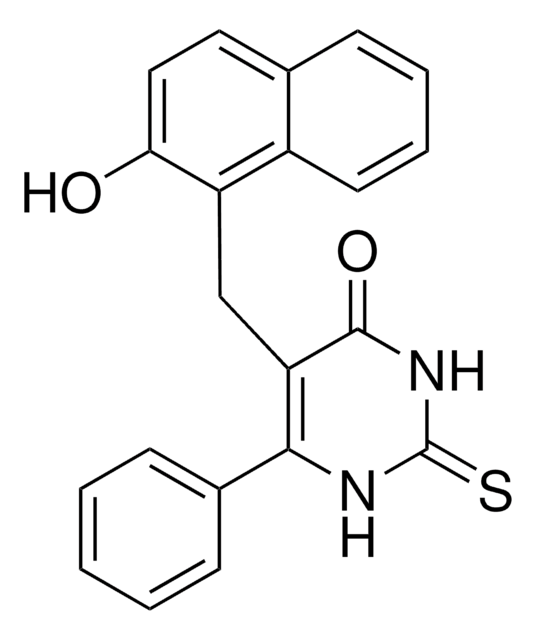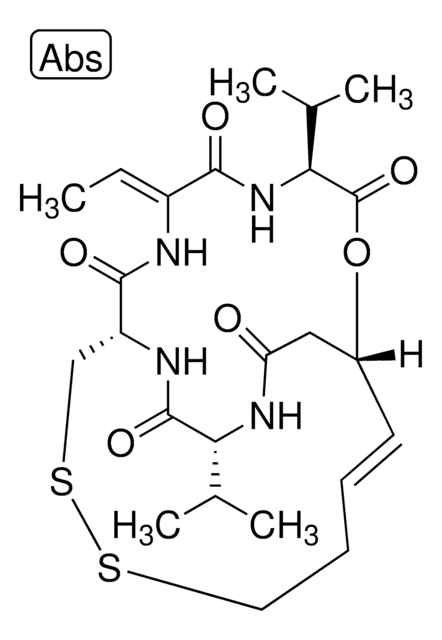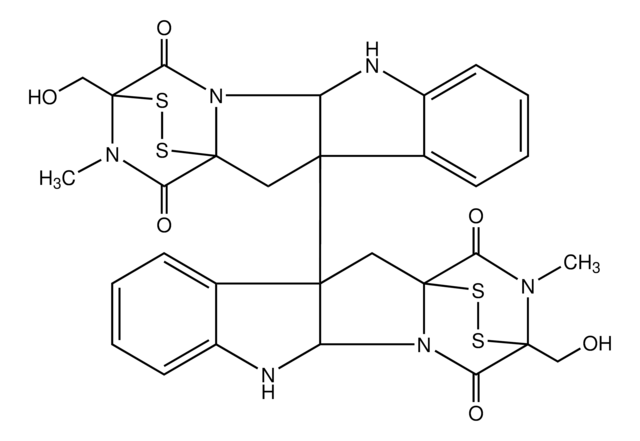Wichtige Dokumente
S8825
Salermide
≥98% (HPLC)
Synonym(e):
N-{3-[(2-Hydroxy-naphthalen-1-ylmethylene)-amino]-phenyl}-2-phenyl-propionamide
About This Item
Empfohlene Produkte
Qualitätsniveau
Assay
≥98% (HPLC)
Form
powder
Lagerbedingungen
desiccated
Farbe
yellow
Löslichkeit
DMSO: >10 mg/mL
Lagertemp.
2-8°C
SMILES String
CC(C(=O)Nc1cccc(c1)\N=C\c2c(O)ccc3ccccc23)c4ccccc4
InChI
1S/C26H22N2O2/c1-18(19-8-3-2-4-9-19)26(30)28-22-12-7-11-21(16-22)27-17-24-23-13-6-5-10-20(23)14-15-25(24)29/h2-18,29H,1H3,(H,28,30)/b27-17+
InChIKey
HQSSEGBEYORUBY-WPWMEQJKSA-N
Anwendung
Biochem./physiol. Wirkung
Leistungsmerkmale und Vorteile
Ähnliches Produkt
Lagerklassenschlüssel
11 - Combustible Solids
WGK
WGK 3
Analysenzertifikate (COA)
Suchen Sie nach Analysenzertifikate (COA), indem Sie die Lot-/Chargennummer des Produkts eingeben. Lot- und Chargennummern sind auf dem Produktetikett hinter den Wörtern ‘Lot’ oder ‘Batch’ (Lot oder Charge) zu finden.
Besitzen Sie dieses Produkt bereits?
In der Dokumentenbibliothek finden Sie die Dokumentation zu den Produkten, die Sie kürzlich erworben haben.
Artikel
Epigenetic modifications are thought to occur through two key interconnected processes—DNA methylation and the covalent modification of histones.
Unser Team von Wissenschaftlern verfügt über Erfahrung in allen Forschungsbereichen einschließlich Life Science, Materialwissenschaften, chemischer Synthese, Chromatographie, Analytik und vielen mehr..
Setzen Sie sich mit dem technischen Dienst in Verbindung.








